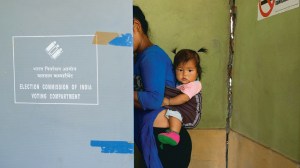- India
- International
Life expectancy in Bihar down by 6.9 years due to bad air: Study
While Patna has been under constant media glare for its poor air quality, nine district headquarters including Sheohar, Bhojpur, Buxar, Gopalganj, Siwan, Muzaffarpur and Vaishali have worse air quality than Patna, according to the AQLI.
 AQLI shows Siwan as the most polluted Bihar town, where people could live 9.01 years longer if WHO guidelines on air quality are met. (Representational)
AQLI shows Siwan as the most polluted Bihar town, where people could live 9.01 years longer if WHO guidelines on air quality are met. (Representational)
Thanks to poor air quality, residents of Patna could be losing 7.7 years of their life while people of Bihar could be losing 6.9 years on an average. In comparison, the loss of life expectancy for Patna residents was four years in 1998.
Life expectancy for smaller towns like Siwan, Gopalganj, Saran and Muzaffarpur could be more, eight-nine years, in comparison to the loss of a little over four years in 1998.
These are the findings of the Energy Policy Institute at the University of Chicago’s Air Quality Life. The research team had conducted an air quality analysis of various cities from 1998 till 2016. The findings of the study were combined with localised and global particulate measurements.
A team from the institute had recently visited Patna and expressed concern at the deteriorating air quality of Bihar. Smaller towns like Siwan and Muzaffarpur have poor Air Quality Index (AQI), worse than Patna, which is at the 10th position in the state. Air Quality Life Index (AQLI) shows Siwan as the most polluted Bihar town, where people could live 9.01 years longer if WHO guidelines on air quality are met. Likewise, people of Gopalganj, Saran, Muzaffarpur and Vaishali could live eight years more.
The WHO’s guideline is 10 micrograms per cubic meter (µg/m3) and the national standards for India is 40 micrograms per cubic meter (µg/m3). The AQLI measures potential gains in life expectancy by lowering PM2.5 concentrations to meet either the WHO guideline for particulate matter concentrations or nationally administered air quality standards.

Energy Policy Institute at University of Chicago (EPIC-India’s) Executive Director, Dr Ken Lee said, “The AQLI tool suggests that if particulate pollution levels in Bihar were permanently reduced to the WHO standard, the average person would live nearly seven years longer, on average.” AQLI establishes particulate pollution ad the single biggest threat to human health with its effect on life expectancy.
While state capital Patna has been under constant media glare for its poor air quality, nine district headquarters including Sheohar, Bhojpur, Buxar, Gopalganj, Siwan, Muzaffarpur and Vaishali have worse air quality than Patna, according to the AQLI. There are 13 district towns including Lakhisarai, Nalanda, Saharsa and Khagaria which are close to Patna in air pollution. AQLI says people living in these towns could live seven years more if WHO guidelines are met. In comparison, the loss of life expectancy in these towns was three to four years in 1998. Five least polluted Bihar cities are Kishanganj, Araria, Banka, Katihar and Purnia.
According to a study on the impact of air pollution in Patna, carried out by IIT Delhi and Patna-based Centre for Environment and Energy Development (CEED), there was an average of 4,127 deaths between 2000 and 2017. The main reason for the deaths was Chronic Obstructive Pulmonary Disease (COPD), the study stated.
The study had also assessed the impact of air pollution of 11 cities of UP, Bihar and Jharkhand. Kanpur and Lucknow recorded the highest mortality rate on an average with 4,173 and 4,127 deaths respectively.
In Bihar’s Gaya and Muzaffarpur, there was an average of 710 and 531 deaths, respectively, between 2000 and 2017. A previous study in 2017 by the Global Burden of Disease, Institute of Health Matrix, had shown that 91,458 people died because of air pollution in Bihar. Out of which, 14,929 were children below five years and 1,062 were between 5-15 years.
Bihar deputy chief minister and environment minister Sushil Kumar Modi, however, said: “Transport and construction sectors were mainly responsible for air pollution. “We have found that stubble burning in fields across the state is turning out to be one of the major reasons of air pollution. We are creating awareness on how dry stubble can work as a compost. We are no longer giving licenses of brick kilns. In urban areas, no new license of auto-rickshaw is given. CNG has also been introduced. All new constructions are being done under green blanket cover”.
Apr 20: Latest News
- 01
- 02
- 03
- 04
- 05






































